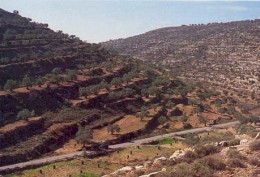
According to author Robert D. Miller, archaeological surveys and excavations of the central hill country have provided a much clearer picture of daily life in ancient Israel during the time of the Biblical Judges and the early Israelite settlers of Canaan.
What was life like for the tribes of Israel in the time of the Biblical Judges, the period archaeologists call Iron Age I (1200–1000 B.C.E.)?
The evidence for the early Israelite settlers of Canaan comes from two sources: archaeological survey and excavations. Much of the area of the central highlands, where most of the settlers of Canaan established their villages, was archaeologically surveyed in the 1980s and 1990s.
These surveys provided much useful information about daily life in ancient Israel during the period of the Biblical Judges, including the arrangement and size of tribal villages and even the nature of early Israelite economic and political systems. Excavation data, both from recent excavations (Shiloh, for example) and from digs long past (such as Bethel), also provide evidence of daily life in ancient Israel, including the society’s wealth, warfare and housing.
From this evidence, the following portrait emerges of daily life in ancient Israel during the time of the Biblical Judges.
The free eBook Life in the Ancient World guides you through craft centers in ancient Jerusalem, family structure across Israel and articles on ancient practices—from dining to makeup—across the Mediterranean world.
The Israelite villages built by the settlers of Canaan were on hilltops. They were quite small, possibly 400 people in the largest of these—Shiloh or Gibeon, for instance. These towns were mostly unwalled, though they were part of larger political units or regional chiefdoms that provided security. The Israelite villages within a given region were subjects of the major town of the area, some of which, like Shechem, were very large and controlled considerable territory.
Israelites lived in nuclear households during the time of the Biblical Judges, often with their relatives in clusters of houses around a common courtyard. Houses were made of mudbrick with a stone foundation and perhaps a second story of wood. The living space of the houses consisted of three or four rooms, often with sleeping space on the roof or in a covered roof loft. One of the first-floor rooms was probably a courtyard for domestic animals, mostly sheep and goat.
At that time of the Biblical Judges, the hills were densely overgrown, covered with a thick scrub of pine, oak and terebinth trees. And it was often too rocky for the sheep, so raising animals never stood at the forefront of the economy. Instead, the early Israelite settlers of Canaan would burn off some of the brush, terrace the hillsides within an hour’s walk of the village, and plant grain, primarily wheat. Other lesser crops included lentils, garbanzo beans, barley and millet. They had orchards on these terraces as well.
BAS Library Members, read more about daily life in ancient Israel during the time of the Biblical Judges in Robert D. Miller, Archaeological Views, “Israelite Life Before the Kings,” Biblical Archaeology Review, March/April 2013.
Not a BAS Library or All-Access Member yet? Join today.The free eBook Life in the Ancient World guides you through craft centers in ancient Jerusalem, family structure across Israel and articles on ancient practices—from dining to makeup—across the Mediterranean world.
Related content in Bible History Daily:
Does a Jordan Valley Site Reveal the Origin of Ancient Israel?
Ancient Worship in Israel—Before the Israelites
The Oldest Hebrew Script and Language
Tel ‘Eton Excavations Reveal Possible Judahite Administrative Center
You Are What You Eat: The Israelite Diet and Archaeology
Scorched Wheat May Provide Answers on the Destruction of Canaanite Tel Hazor
This Bible History Daily feature was originally published in March 2013.
Get more biblical Archaeology: Become a Member
The world of the Bible is knowable. We can learn about the society where the ancient Israelites, and later Jesus and the Apostles, lived through the modern discoveries that provide us clues.
Biblical Archaeology Review is the guide on that fascinating journey. Here is your ticket to join us as we discover more and more about the biblical world and its people.
Each issue of Biblical Archaeology Review features lavishly illustrated and easy-to-understand articles such as:
• Fascinating finds from the Hebrew Bible and New Testament periods
• The latest scholarship by the world's greatest archaeologists and distinguished scholars
• Stunning color photographs, informative maps, and diagrams
• BAR's unique departments
• Reviews of the latest books on biblical archaeology
The BAS Digital Library includes:
• 45+ years of Biblical Archaeology Review
• 20+ years of Bible Review online, providing critical interpretations of biblical texts
• 8 years of Archaeology Odyssey online, exploring the ancient roots of the Western world in a scholarly and entertaining way,
• The New Encyclopedia of Archaeological Excavations in the Holy Land
• Video lectures from world-renowned experts.
• Access to 50+ curated Special Collections,
• Four highly acclaimed books, published in conjunction with the Smithsonian Institution: Aspects of Monotheism, Feminist Approaches to the Bible, The Rise of Ancient Israel and The Search for Jesus.
The All-Access membership pass is the way to get to know the Bible through biblical archaeology.
The post Daily Life in Ancient Israel appeared first on Biblical Archaeology Society.


0 Commentaires